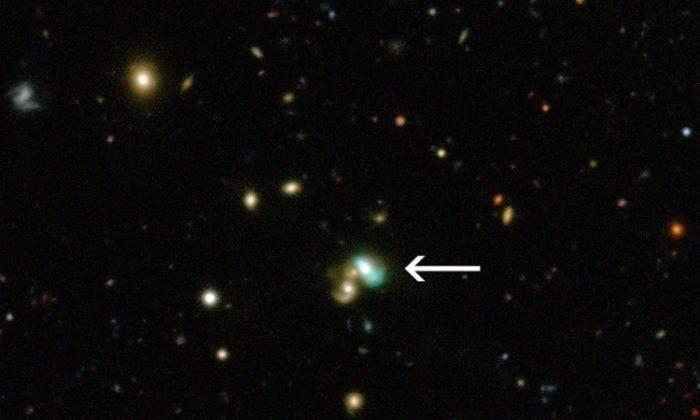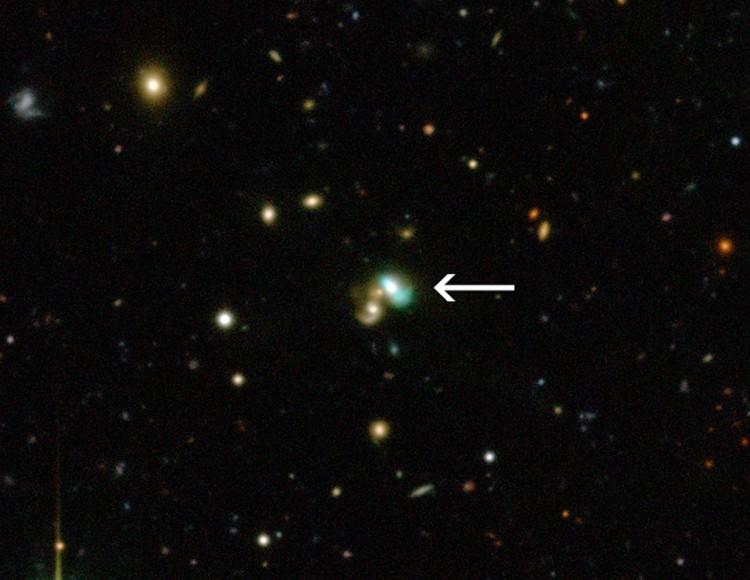A rare new type of galaxy called the “green bean galaxy” has been discovered shining in distant space.
Mischa Schirmer, an astronomer from the Gemini Observatory, was looking at faraway galaxies in images from the Canada-France-Hawaii Telescope when he noticed an unusual bright green galaxy.
With his research team, he investigated the green glow and found that it was caused by a black hole. Galaxies often have a glow at the center because of gas surrounding a black hole, but in this case the whole galaxy was glowing.
The researchers think this is because the black hole at the center used to be much more active, but is now dying out, leaving a large field of glowing gas behind. The green color comes from oxygen, which glows bright green when a black hole ionizes it.
The team went on to discover 16 more green bean galaxies. The first one Schirmer found, named J2240, is located about 3.7 billion light-years away in the constellation Aquarius.
“These glowing regions are fantastic probes to try to understand the physics of galaxies—it’s like sticking a medical thermometer into a galaxy far, far away,” Schirmer said in a press release.
“Usually, these regions are neither very large nor very bright, and can only be seen well in nearby galaxies. However, in these newly discovered galaxies they are so huge and bright that they can be observed in great detail, despite their large distances.”
Green bean galaxies are very rare—there’s only one on average in a cube of space about 1.3 billion light-years across.
They got their name because they look like bigger versions of green pea galaxies. However, they are not related to green pea galaxies, which are tiny greenish galaxies that are home to rapidly developing stars.
The research was published in The Astrophysical Journal on Nov. 29.
The Epoch Times publishes in 35 countries and in 19 languages. Subscribe to our e-newsletter.







Friends Read Free